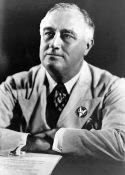SOMETIMES, attention should be paid to the absence of news. America’s economic miseries continue, with unemployment still high and home sales stagnant or dropping. The gap between the wealthiest Americans and their fellow citizens is wider than it has been since the 1920s.
And yet, except for the demonstrations and energetic recall campaigns that roiled Wisconsin this year, unionists and other stern critics of corporate power and government cutbacks have failed to organize a serious movement against the people and policies that bungled the United States into recession. . . .
Michael Kazin, "Whatever Happened to the American Left?" New York Times, 25 September 2011.






















